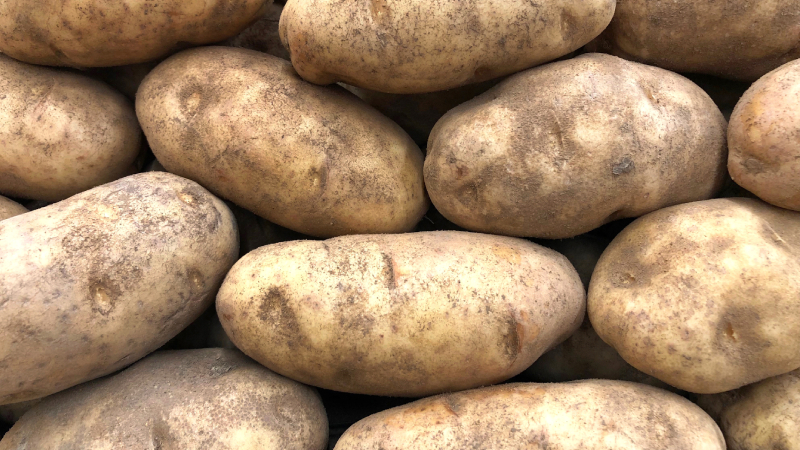Postharvest
DECCO insights and technology ensure less food waste and increased food security - more flavour, freshness and sustainability for all.

Optimizing Potato Storage: Strategies and Solutions for Effective Sprout Control
09 Aug 2023 | DECCO |
With another
growing season in the books, potato
harvest is dawning for producers
around North America. With this comes the excitement of finally seeing what is under those hills and reaping
the benefits from the growing
seasons hard work. Among the
excitement and relief of getting the crop out of the ground, growers must shift
their efforts into early storage management to ensure the
crop remains sound.
The first weeks of the storage season could arguably be the most important for potato producers. Removing field heat, lowering temperatures to reduce disease pressure, and promoting wound healing are key components to a successful storage season. On top of this, producers must begin determining what sprout control products will suit their storage needs. Sprout control is a major objective in storage management as sprouting can cause tuber weight loss, changes in nutritional value, and degradation of quality parameters especially in processing potatoes.
Producers have a limited arsenal when it comes to controlling sprouts in storage and may have fewer depending upon the end market of the potato crop. Growers may be able to rely upon the natural physiological dormancy (endo-dormancy) of tubers for a short period of time after harvest, but this varies greatly by cultivar and cannot be manipulated. The next tool that producers have is another stage of dormancy called eco-dormancy. This stage can be manipulated by environmental conditions. In this state of eco-dormancy sprout development can be delayed significantly by placing tubers in unfavorable conditions for growth, such as cold temperatures below 40F.
Cold-storage temperatures are heavily relied upon by seed producers and fresh market producers. However, potatoes destined for processing may not be able to be held at these low temperatures dueto cold induced sweetening which results in dark frying color.
The next tool producers rely upon for sprout control are chemical applications. There are a variety of products available that provide temporary or long-term sprout control. Most of these products are applied to potatoes via thermal application while they are in storage, with the exception of maleic hydrazide (MH).
MH has long been used to manipulate size profiles of certain cultivars and as a short-term sprout control agent. MH is anear harvest chemical applied to the foliage of potatoes where the chemical is translocated into the tubers. The chemical prevents cell division within the tubers but not cell expansion. This allows established tubers to continue growing in size (bulking) while eliminating late sets and very small tubers. Timing of application of this chemistry is critica! as applying too early may result in reduced yields and applying too late may negate the beneficia! effects. Size of tubers at application along with time to vine kill/harvest needs to be considered when applying MH. Reliance on MH has increased especially in European countries that have lost the use of chlorpropham (CIPC). MH is a good fit for varieties that have very short endo-dormant periods, short-term storages, or when used in combination with other sprout control products. MH cannot be used on seed potatoes.
Chlorpropham or CIPC has been the gold standard for sprout control in North America for many years. CIPC is a crystalline structure that has an herbicida! action by inhibiting cell division within the sprout and provides long term sprout control. CIPC is typically applied thermally into storages after wound healing is complete but prior to sprout development. Caution needs to be token to ensure the wound healing process is complete as CIPC will prevent cell division during suberization. CIPC can also be applied as a liquid prior to shipping to extend shelf life of fresh/table stock potatoes. CIPC cannot be used on seed potatoes.
1,4-dimethylanphthalene (DMN) is a naturally derived chemical from the skin of potatoes that is now synthetically produced. DMN is commonly used as a dormancy enhancer, although the mode of action is not fully understood. Effects of DMN are temporary and fully reversable with time as residues decrease. DMN can be applied at any time in storage but sprout control is said to be improved when applied soon after harvest. For long term storages repeat applications of DMN or pairings with other chemistries such as MH, essential oils, or CIPC may result in best control. DMN may be used on seed potatoes.
Essential oils are naturally derived from various plant extracts. Orange, clove, peppermint, and many others have been tested at controlling sprout development in tubers. Often these are applied after sprouts have developed as a burning agent. Essential oils do not have long lasting effects and must have many repeat applications orbe paired with other chemical/cultural practices to maintain adequate sprout control. These are typically organic certified, and sorne may be used in seed potatoes.
Potato producers must actively be thinking about their storage management long before the storage season begins. This article covered sorne of the current tools that producers have available to them to maintain adequate sprout control during their storage season. Decco post-harvest understands the complexity of producing and maintaining a high-quality nutritious crop for consumers. That is why we are dedicated to providing a full range of post-harvest solutions. Decco carries a range of sprout inhibitors, sanitizers, disinfectants, coatings, and technology under its Fresh Defense brand. Reach out to a local representative or visit deccous.com for more information.
Always understand and follow label instructions. Reach out to a knowledgeable representative for questions on how any of these products may fit into your storage management system. Product descriptions are for informational purposes only and should not be used as recommendations.